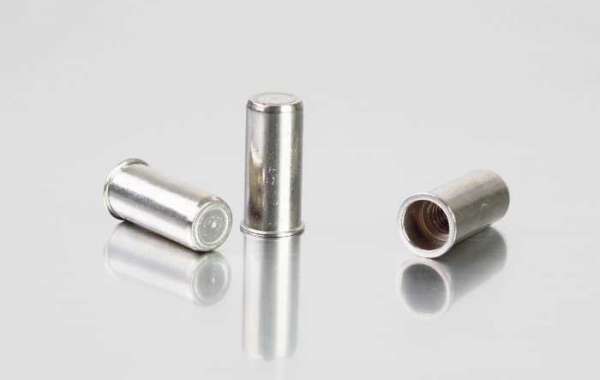A nut, also called a nut, is a fixing tool with a hole in the center and a thread on the inside of the hole. Nuts are often shared with screws of the same size to fix related joints. If environmental factors such as vibration cause the nut to loosen, you can use tools such as glue or pins to further strengthen the relevant part. The nuts are mostly hexagonal, followed by squares. So there is a hex rivet nut .
There are three production processes for ordinary hex rivet nuts, cold heading and hot heading. Under special circumstances, organically processed products are the slowest in efficiency, so they will be chosen as a last resort. Let's talk about cold heading first. The specifications are usually M3~M30. First select the wire. After pickling and cold drawing, connect one end of the wire to the feeding place of the cold heading machine, and the corresponding size will be punched out according to the mold in the cold heading machine. The hexagonal blank has a hole in the middle, and the form is the same as that of the general hexagonal nut, but there is no tapping. The old-fashioned cold heading machine cannot be formed at one time. After the hexagonal blank is punched, it must be poured into the hopper on the tapping machine for tapping. If required, heat treatment and surface treatment are required, that is, to adjust the hardness of the nut and the surface anti-rust treatment. The current cold heading machine has a one-time molding, but the principle is not much different, that is, the tapping machine and the cold heading machine are combined. For the integration of faster efficiency, cold heading is the fastest and lowest cost production process.
Of course, in a strict sense, half hex rivet nut and hex rivet nut are actually not the same.








